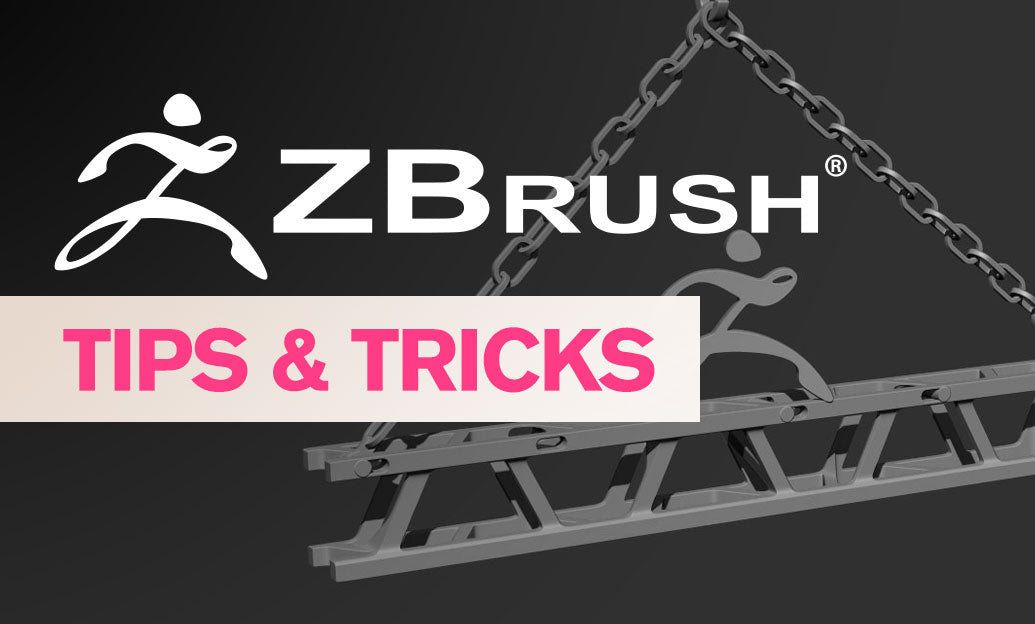Your Cart is Empty
Customer Testimonials
-
"Great customer service. The folks at Novedge were super helpful in navigating a somewhat complicated order including software upgrades and serial numbers in various stages of inactivity. They were friendly and helpful throughout the process.."
Ruben Ruckmark
"Quick & very helpful. We have been using Novedge for years and are very happy with their quick service when we need to make a purchase and excellent support resolving any issues."
Will Woodson
"Scott is the best. He reminds me about subscriptions dates, guides me in the correct direction for updates. He always responds promptly to me. He is literally the reason I continue to work with Novedge and will do so in the future."
Edward Mchugh
"Calvin Lok is “the man”. After my purchase of Sketchup 2021, he called me and provided step-by-step instructions to ease me through difficulties I was having with the setup of my new software."
Mike Borzage
ZBrush Tip: Enhancing Photorealism in ZBrush: Mastering Material, Texture, and Rendering Techniques
July 19, 2024 2 min read

For artists aiming to bring their digital sculptures to life, achieving photorealism is often the pinnacle of success. ZBrush offers a robust set of tools for material creation and rendering, helping artists produce stunning, lifelike results. Today's tip explores how to enhance the realism of your ZBrush projects through careful material and rendering techniques.
Understanding Material Properties:
- Begin by studying real-world materials to notice how light interacts with different surfaces.
- In ZBrush, use the Material palette to adjust attributes like Specularity, Reflectivity, and Diffusion to mimic real-world materials.
- Combine multiple materials using MatCap (Material Capture) to create complex surface properties.
Polypaint for Realistic Textures:
- Utilize Polypaint to hand-paint textures directly onto your model, or project photo references onto your sculpture for added realism.
- Pay attention to subtle color variations and imperfections that occur in natural surfaces.
- For organic models, mix SSS (Sub Surface Scattering) materials to achieve realistic skin textures.
Lighting is Key:
- Effective lighting can make or break the realism of your render. Use ZBrush's Light palette to simulate realistic lighting environments.
- Experiment with different light sources and intensities to create depth and highlight the details of your model.
- Consider using HDRI (High Dynamic Range Imaging) for complex lighting situations, as it can provide a more realistic global illumination.
Rendering Techniques:
- ZBrush's BPR (Best Preview Render) is a powerful tool for achieving high-quality renders within the software.
- Adjust BPR settings like Shadow, AO (Ambient Occlusion), and SSS to add depth and realism.
- Use BPR Filters to fine-tune your render post-production without the need for external software.
Final Touches:
- The little details matter. Use ZBrush's NoiseMaker to add surface imperfections and textural details that mimic real-life wear and tear.
- For reflective surfaces, consider adding subtle scratches or smudges to break up reflections and add authenticity.
To further your knowledge and find the best deals on ZBrush, visit NOVEDGE, where you can explore a variety of tools and resources tailored for ZBrush artists. Remember, the key to achieving photorealism is observation, experimentation, and patience. Happy sculpting!
```You can find all the ZBrush products on the NOVEDGE web site at this page.
Also in Design News

Driving the Future: AI-Enhanced CAD for Automated Design Optimization
May 09, 2025 8 min read
Read More
ZBrush Tip: Maximize Your ZBrush Workflow with Advanced PolyPaint Techniques
May 09, 2025 2 min read
Read MoreSubscribe
Sign up to get the latest on sales, new releases and more …



